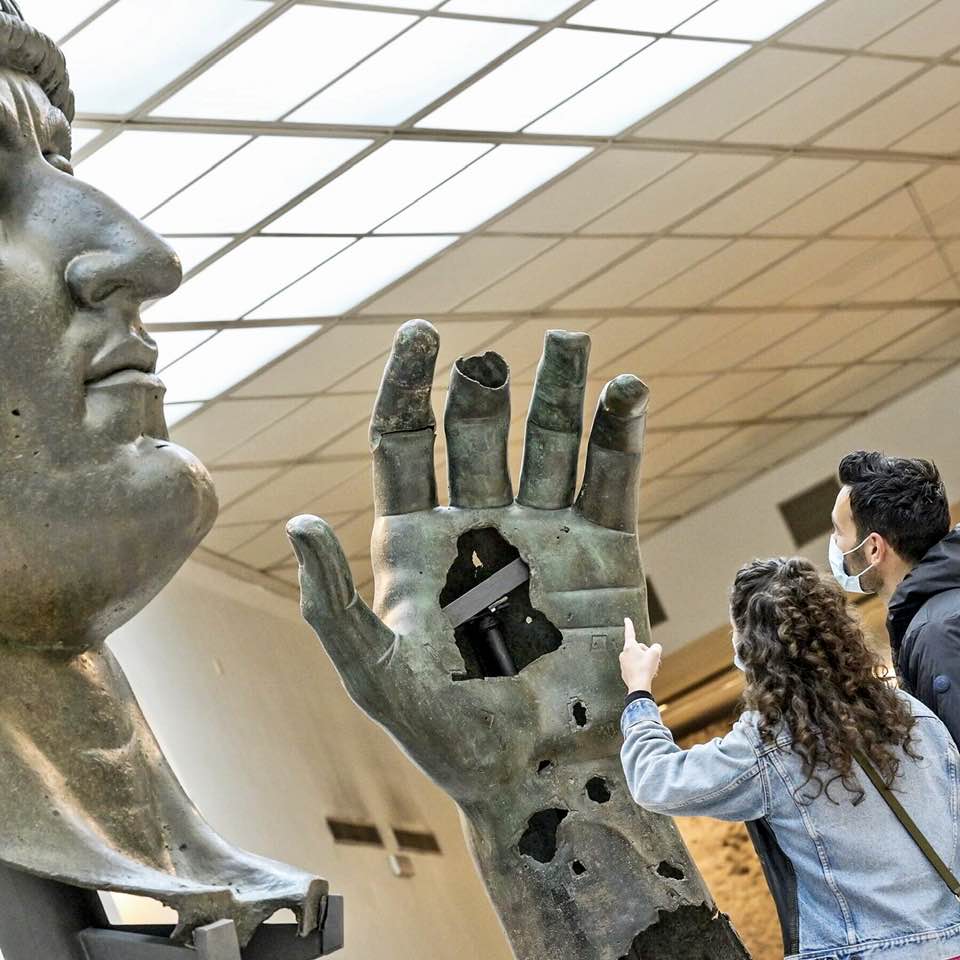The discovery came as a surprise, as the artifact had long been classified as a toe, accompanying the statue of Constantine at the Capitoline Museum
In the world of art and historical discoveries, there are moments that leave researchers and enthusiasts awe-struck, breathing new life into ancient artifacts. Such was the case in 2018 when a research student, diligently working amidst the grandeur of the Louvre Museum, made a startling revelation. The 15-inch bronze artifact thought to be a toe turned out to be none other than the missing forefinger of the colossal bronze statue of Constantine residing in Rome’s Capitoline Museum. This momentous find opened the doors to a fascinating journey of restoration and reconnection with the past.
The discovery came as a surprise, as the artifact had long been classified as a toe, accompanying the statue of Constantine at the Capitoline Museum. However, upon closer examination and meticulous research, the student realized the true identity of the bronze appendage. It was not a toe but the long-lost forefinger of the monumental statue that once adorned the Roman landscape.
The bronze colossus of Constantine itself is a testament to the grandeur of ancient Rome. Standing at a towering height, it depicts the Roman emperor Constantine the Great, an influential figure who played a pivotal role in shaping the history of the Roman Empire. The statue once stood in the Basilica of Maxentius in the Roman Forum, and its missing finger had been a subject of intrigue and curiosity for centuries.
The reconnection of the missing finger with Constantine’s hand was an achievement that involved careful craftsmanship and historical expertise. In 2021, skilled conservators and experts in the field undertook the delicate task of reattaching the finger to its rightful place. With a delicate balance of artistry and scientific precision, they meticulously ensured that the finger seamlessly integrated with the statue, restoring it to its former glory.
The significance of this restoration extends beyond the physical reattachment. It represents a profound moment of rediscovery and the restoration of historical integrity. The missing finger, once detached and separated from its colossal counterpart, is now reunited with Constantine’s hand, completing the magnificent statue as it was intended to be seen.
This momentous event highlights the meticulous efforts invested in preserving our shared heritage. It serves as a reminder of the importance of continuous exploration and scholarship in unraveling the mysteries of the past. Through the dedication and expertise of researchers, conservators, and curators, the story of Constantine and the Roman Empire is revitalized, allowing us to connect with the rich tapestry of history.
The reattachment of the long-lost finger is a testament to the remarkable resilience of ancient artifacts and the potential for unexpected discoveries within the depths of our cultural institutions. It invites us to reflect on the enduring legacy of great civilizations and the importance of safeguarding and understanding our shared past.
As visitors gaze upon the colossal statue of Constantine in Rome’s Capitoline Museum today, they witness the completion of a long-awaited reunion. The restored finger stands as a symbol of the ongoing dialogue between the present and the past, reminding us of the timeless power of art and the stories it holds. The reattachment of Constantine’s finger is a celebration of human ingenuity, historical preservation, and the unyielding quest to connect with the remarkable achievements of our ancestors.
Hits: 3




